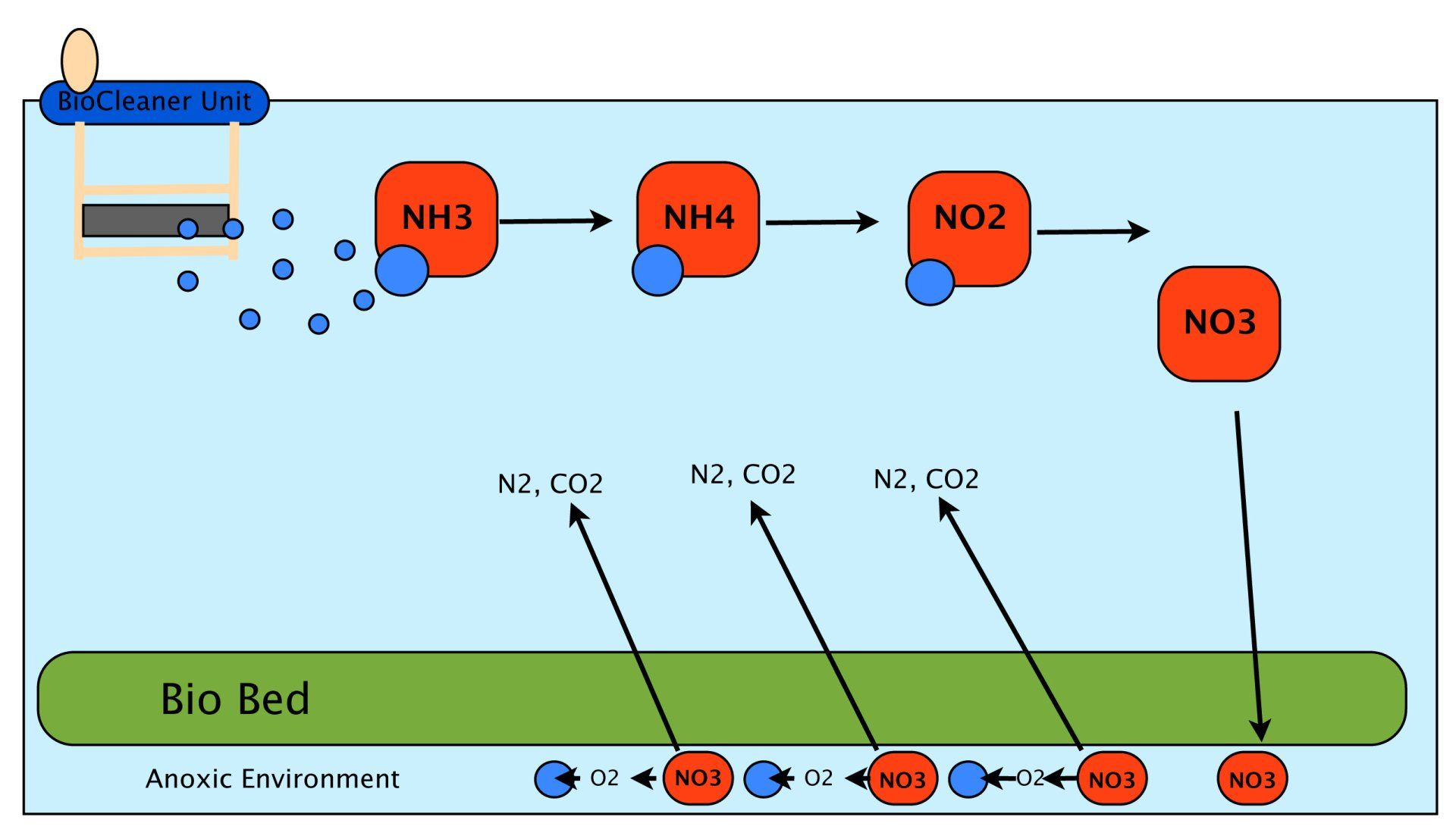Ammonia and Nitrogen
BioCleaner is a complete wastewater treatment system. Effects of high levels of nitrogen can be reduced, such as DO depletion, fish poisoning and harmful algae growth. Common examples of nitrogen entering watewater are: urea or urine, food wastes, chemicals in detergents and other agents coming from industrial structures.
When these are flushed and mixed into the sewage system, urea for example, will be immediately hydrolized into ammonia. The gaseous form of ammonia in water is converted into ionized ammonia or ammonium.
BioCleaner uses microbes to treat wastewater instead of chemicals. These microbes can treat ammonia aerobically. We use different sets of denitrifying and nitrifying bacteria to break down ammonia. We break down ammonia to nitrites and nitrates by using our denitrifying bacteria while a different set of nitrifying bacteria breaks it further down to elemental Nitrogen which dissipates to the atmosphere through our ‘Biobed’ development. The Biobed formed is a layer of microbes that will form at the bottom of the waste water tanks that contains 20 to 100 billion microbes per cc.
Since our microbes are facultative, we are able to strip the oxygen from the nitrates thus releasing Nitrogen to the air when we hit the anaerobic zones.
Here are the steps in which our microbes attack Ammonia:
1. A microbe attaches to the Ammonia (NH3) and turns into Ammonium (NH4)
2. Another microbe then attaches to the Ammonium, breaking it down into Nitrites (NO2).
3. The Nitrites continue to break down, turning into Nitrates (NO3).
4. These Nitrates are heavy and sink below the Bio-Bed that has formed at the bottom of the tank or pond from the multiplication and movement of our microbial mix.
5. This creates an anoxic space.
6. Within this anoxic space, another microbe will ‘rip’ the Oxygen (O2) from the Nitrates, effectively releasing Nitrogen Gas and Carbon Dioxide into the water column.
7. Due to constant mixing, there will not be floating scum. No odor will be present.

Lianhe Pond, Chin
The LianHe community of XinDian town has a population of more than 2,400 people. Located at the center of the community is a sewage pond and due to poor management and maintenance, their sewage’s effectiveness decreased that lead to the accumulation of pollutants. Concentration became higher, water color became darker and emitted foul odor. And with the whole village discarding sewage and waste water into the pond about 100-150 tons per day, the water evidently became polluted.
The pond’s water area is about 2500m2
Depth of water is 2-3m (7500m3)
Organic sludge thickness is about 1.2 to 1.5m (3000m3)
BioCleaner removing ammonia-nitrogen, total nitrogen and phosphorus have obvious effect. There had been two times of motor power failure and power failure, but the pollutants still reduces.Microbes treat ammonia-nitrogen, total nitrogen and phosphorus without motor power failure and power failure. The biological catabolisms have continuity.
| ITEMS (mg/l) | BEFORE | AFTER | DECREASE RATE |
|---|---|---|---|
| SS | 41 | 24 | 41% |
| N | 85.8 | 14.7 | 82% |
| NH3-N | 73.5 | 12.9 | 83% |
| P | 7.74 | 4.13 | 46% |
| COD | 103 | 53.2 | 48% |
| BOD | 58.3 | 17.3 | 70% |
BROWSE OUR WEBSITE
CONTACT INFORMATION
Address: 2550 Corporate Place Suite #C101 Monterey Park, California 91754-7637 United States
Phone: 323-981-0797
Email:
info@biocleaner.com
BUSINESS HOURS
Mon - Fri: 8:00 am - 5:00 pm
Sat - Sun Closed







